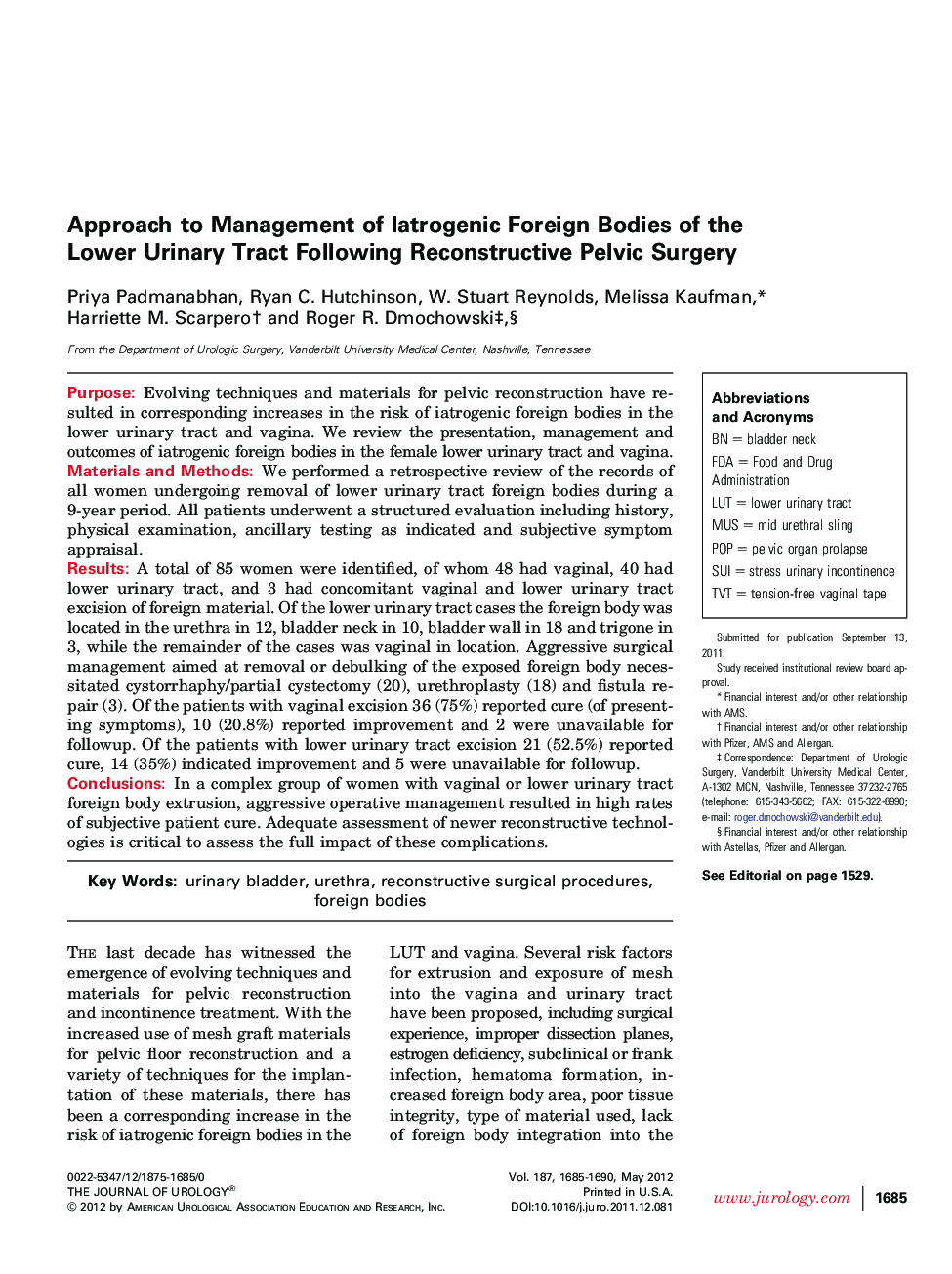| Article ID | Journal | Published Year | Pages | File Type |
|---|---|---|---|---|
| 3868680 | The Journal of Urology | 2012 | 6 Pages |
PurposeEvolving techniques and materials for pelvic reconstruction have resulted in corresponding increases in the risk of iatrogenic foreign bodies in the lower urinary tract and vagina. We review the presentation, management and outcomes of iatrogenic foreign bodies in the female lower urinary tract and vagina.Materials and MethodsWe performed a retrospective review of the records of all women undergoing removal of lower urinary tract foreign bodies during a 9-year period. All patients underwent a structured evaluation including history, physical examination, ancillary testing as indicated and subjective symptom appraisal.ResultsA total of 85 women were identified, of whom 48 had vaginal, 40 had lower urinary tract, and 3 had concomitant vaginal and lower urinary tract excision of foreign material. Of the lower urinary tract cases the foreign body was located in the urethra in 12, bladder neck in 10, bladder wall in 18 and trigone in 3, while the remainder of the cases was vaginal in location. Aggressive surgical management aimed at removal or debulking of the exposed foreign body necessitated cystorrhaphy/partial cystectomy (20), urethroplasty (18) and fistula repair (3). Of the patients with vaginal excision 36 (75%) reported cure (of presenting symptoms), 10 (20.8%) reported improvement and 2 were unavailable for followup. Of the patients with lower urinary tract excision 21 (52.5%) reported cure, 14 (35%) indicated improvement and 5 were unavailable for followup.ConclusionsIn a complex group of women with vaginal or lower urinary tract foreign body extrusion, aggressive operative management resulted in high rates of subjective patient cure. Adequate assessment of newer reconstructive technologies is critical to assess the full impact of these complications.
